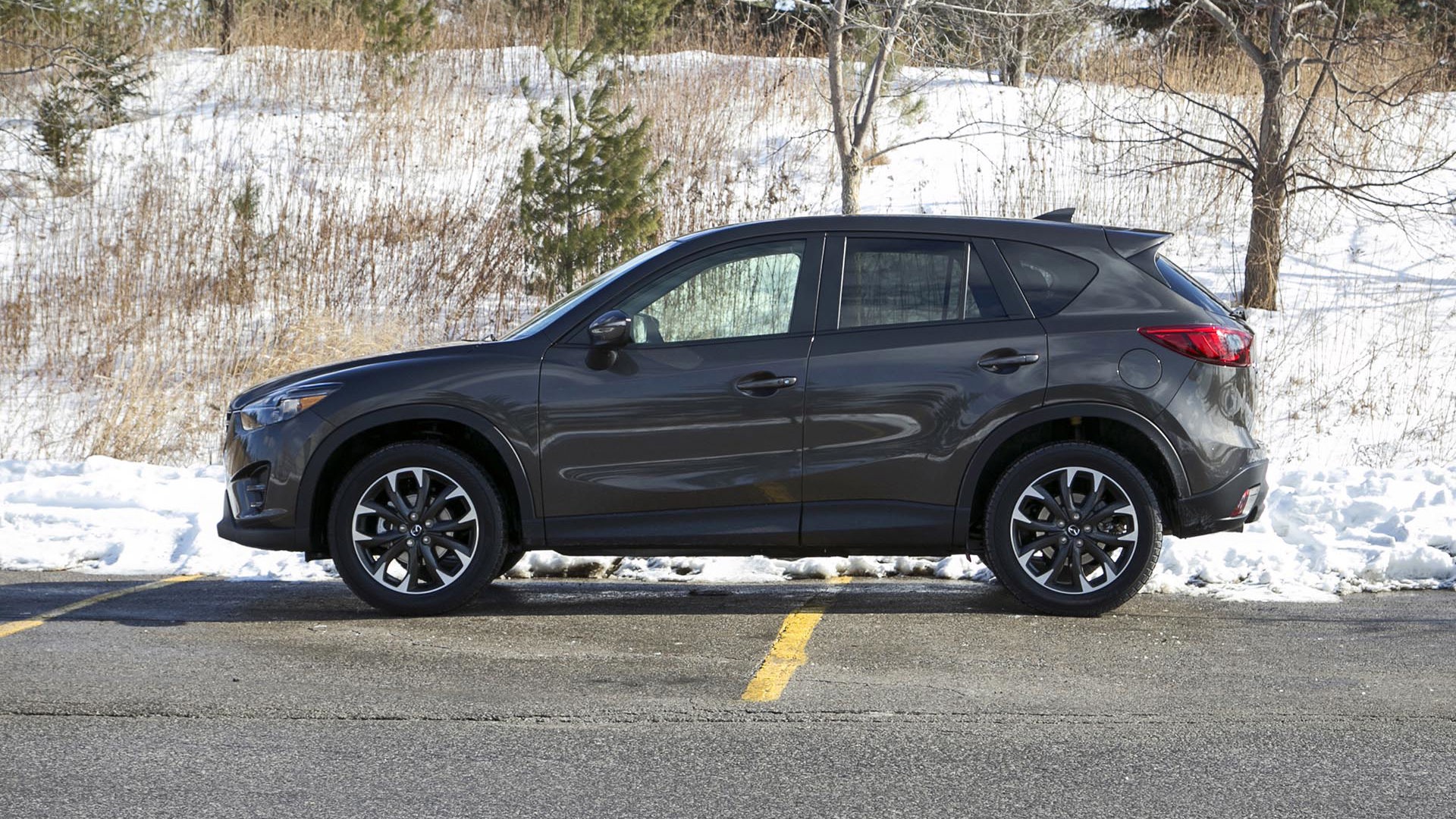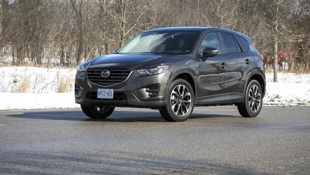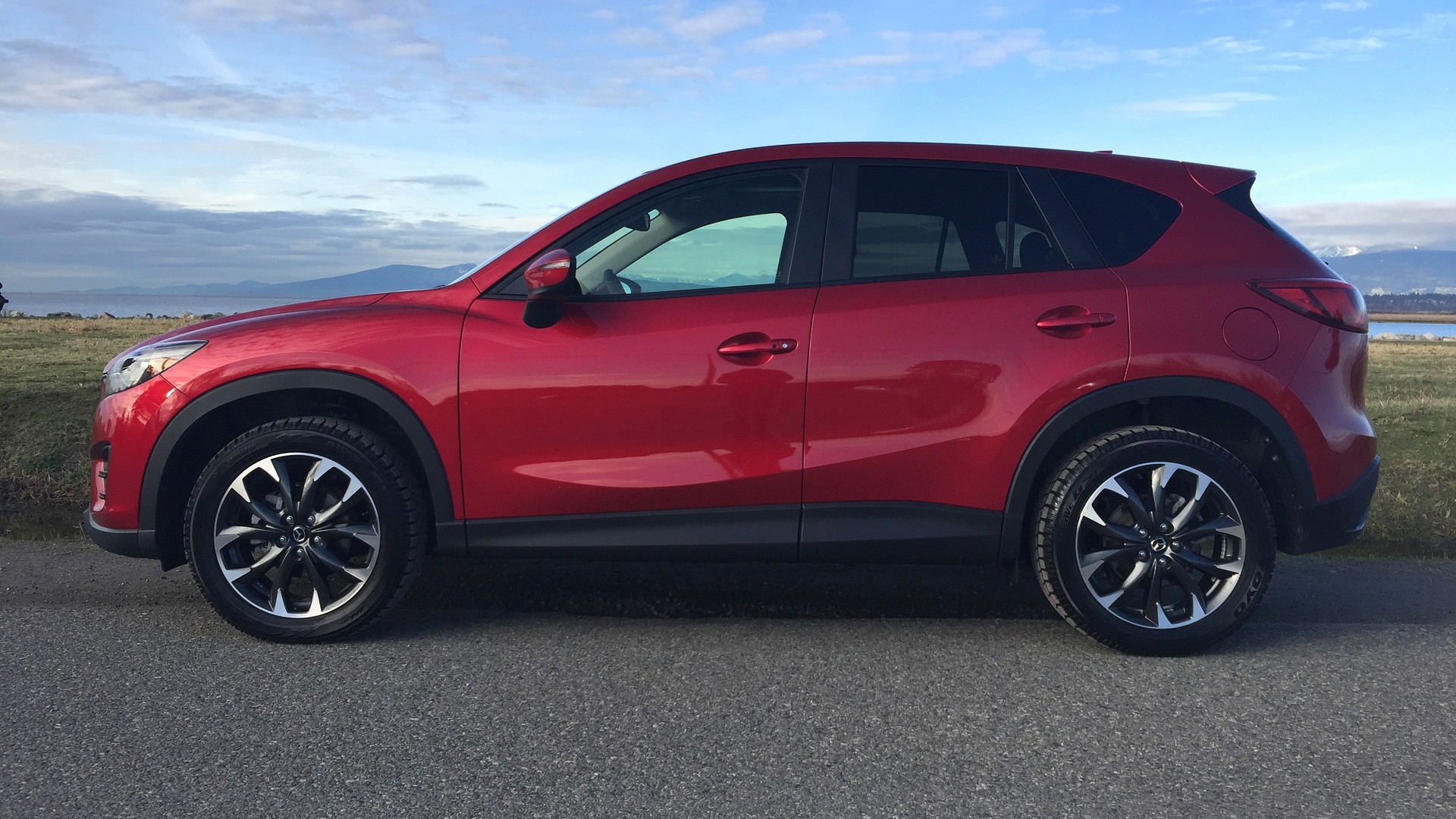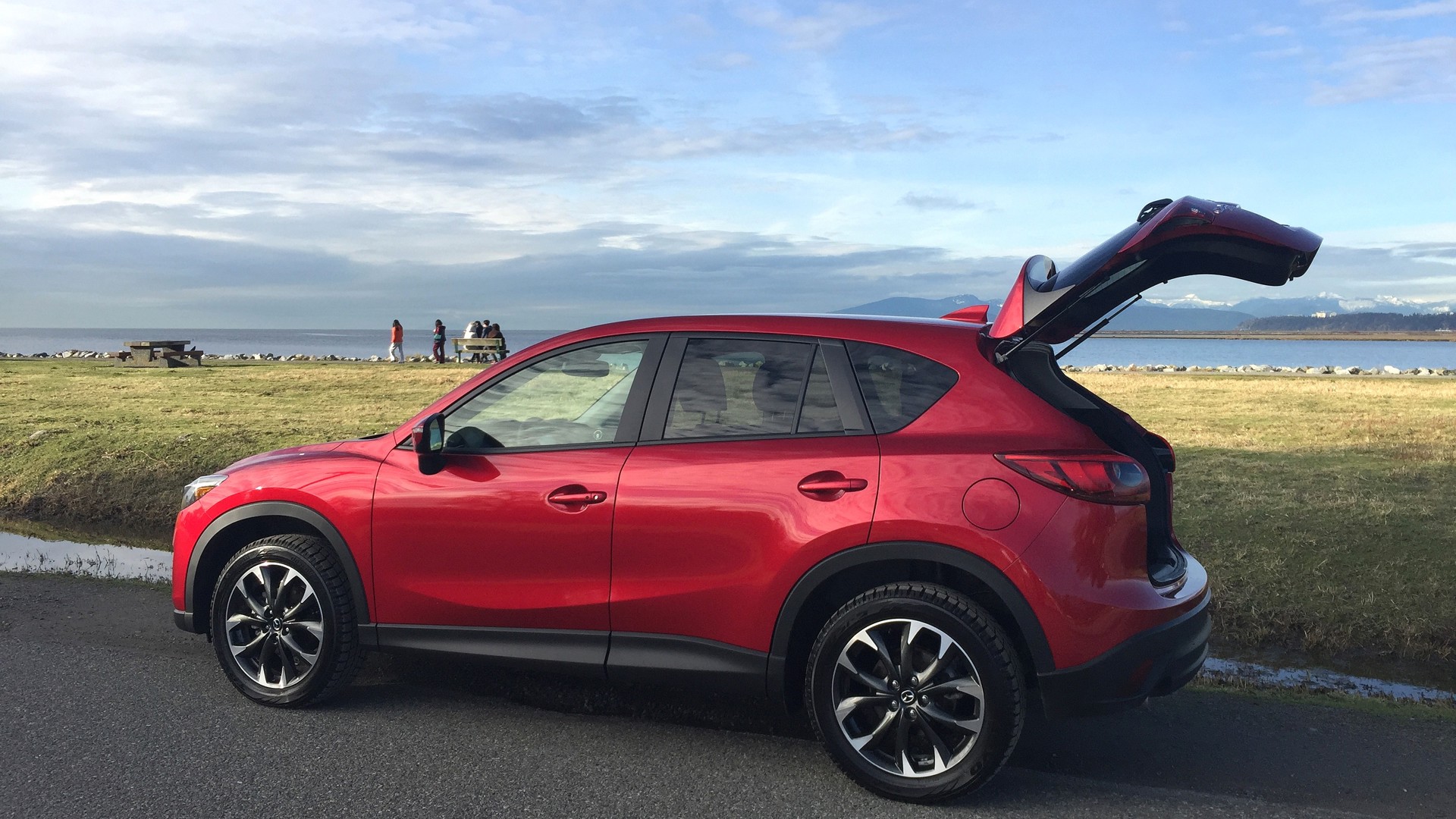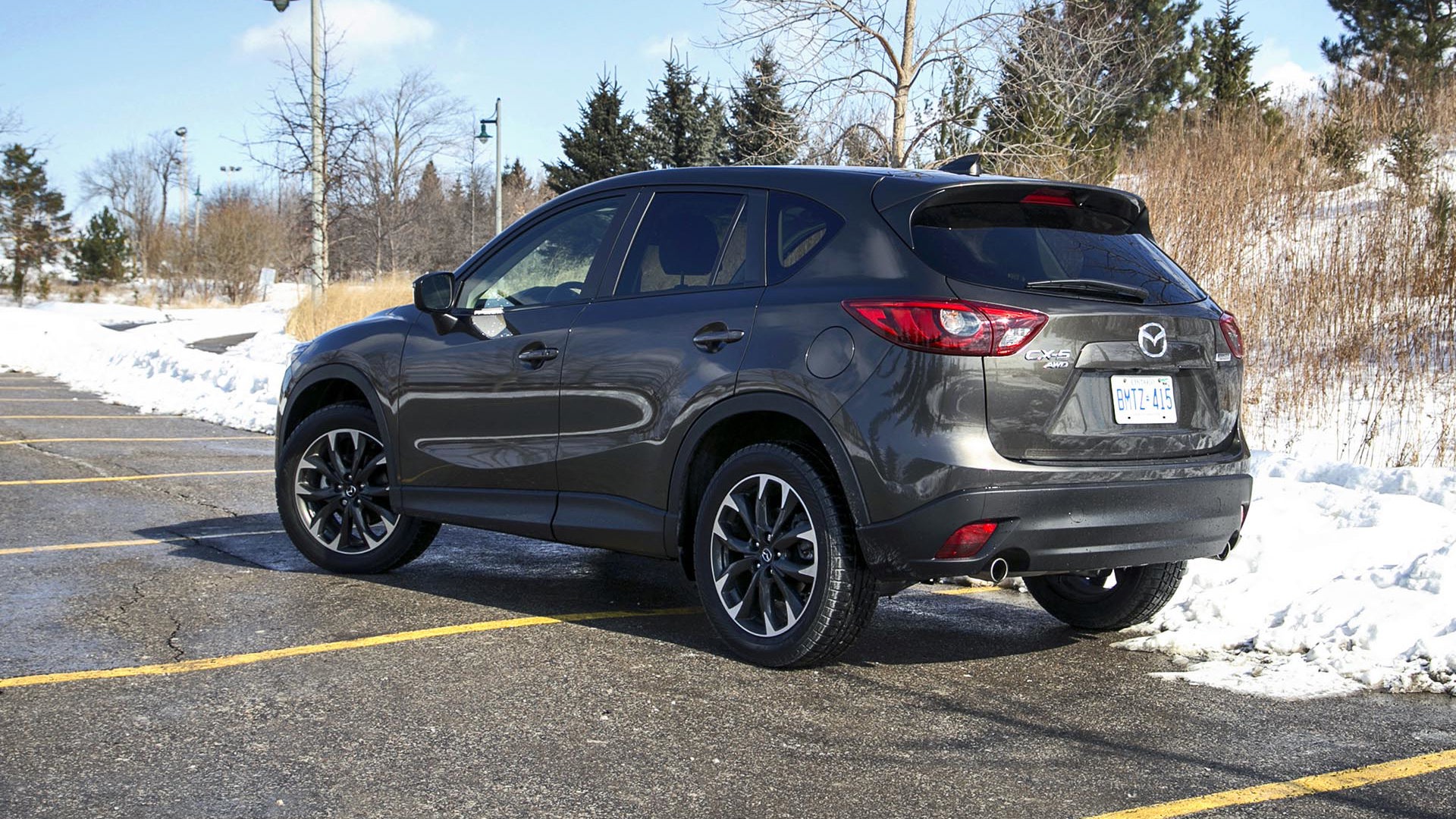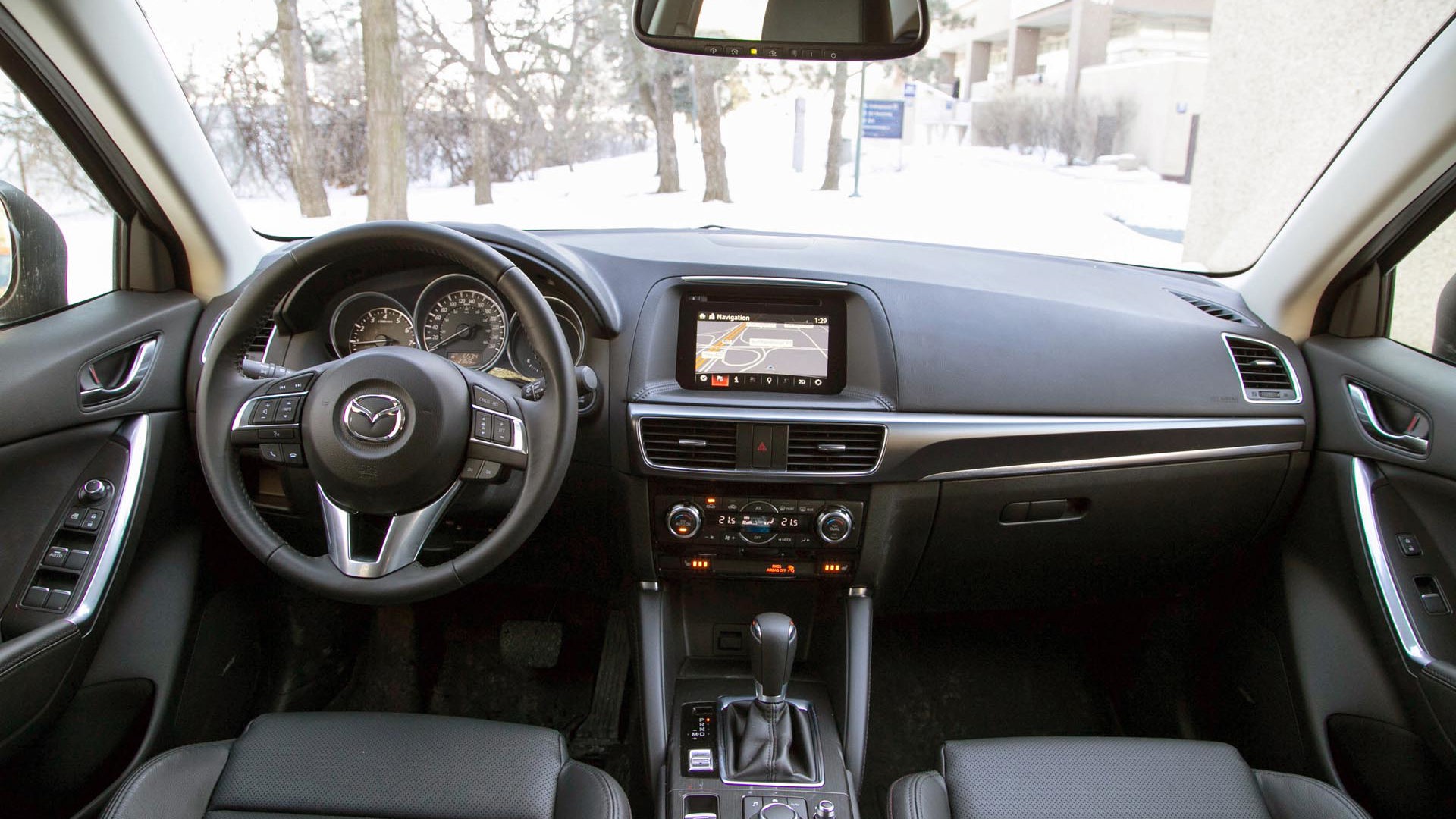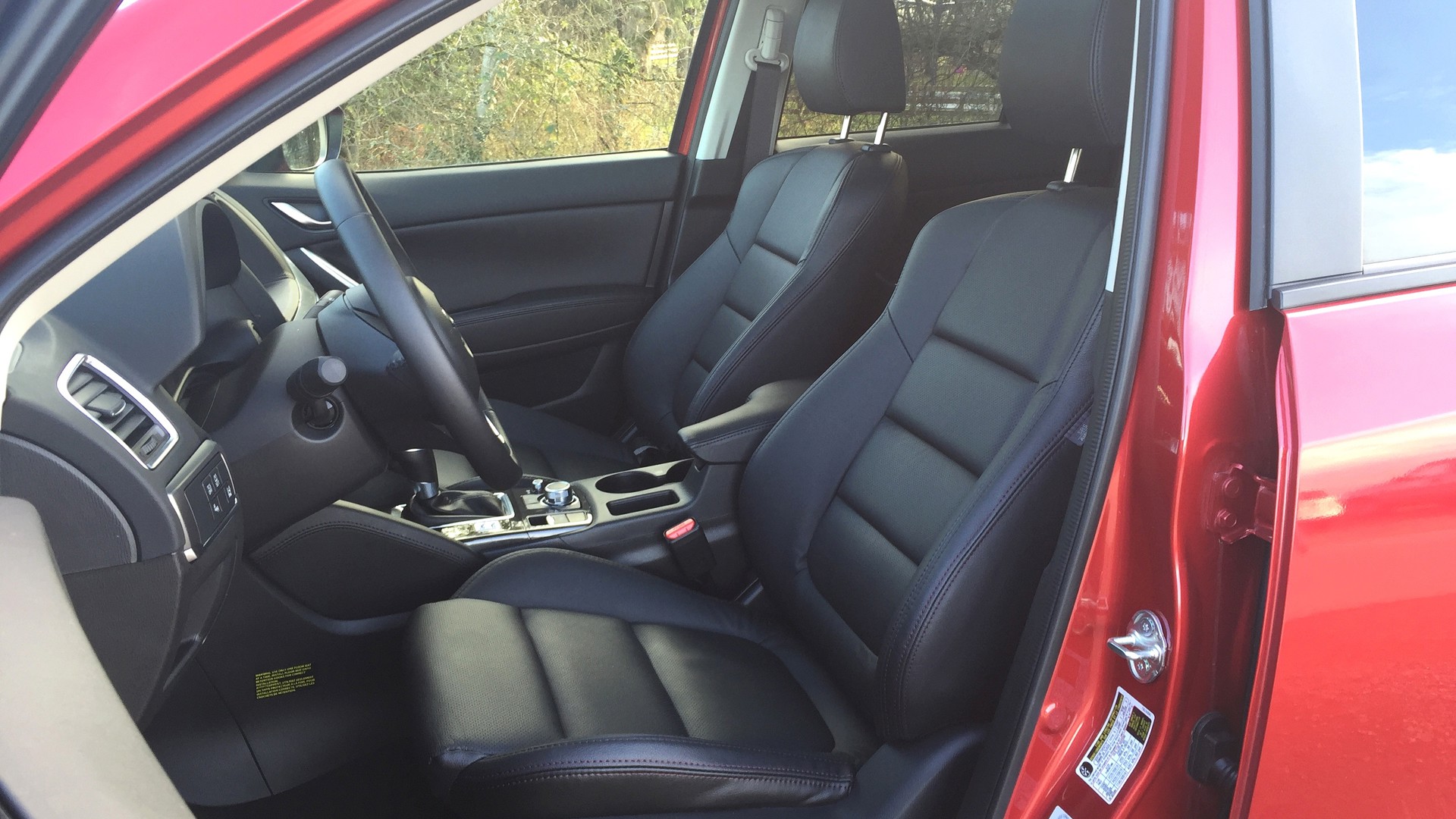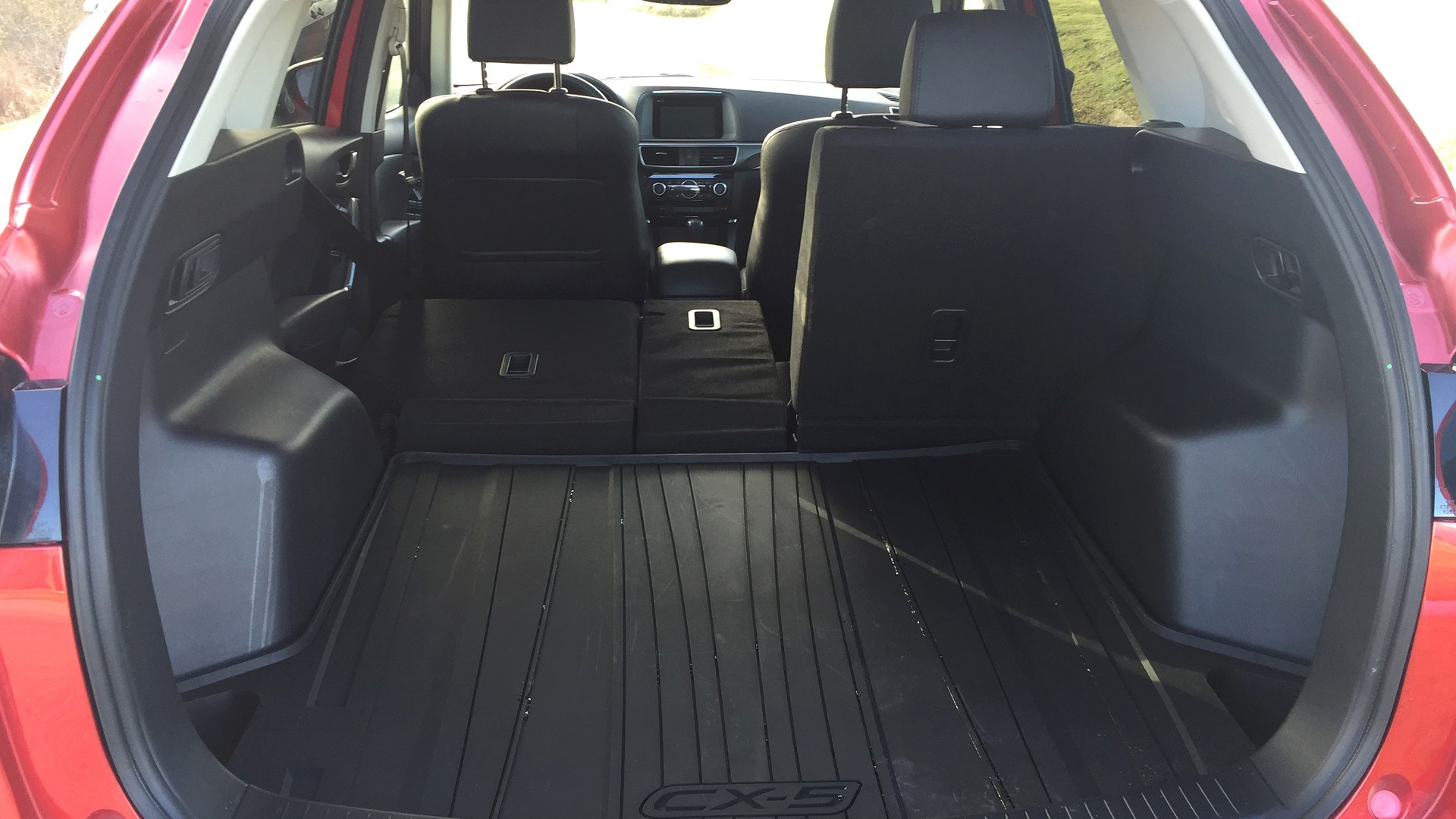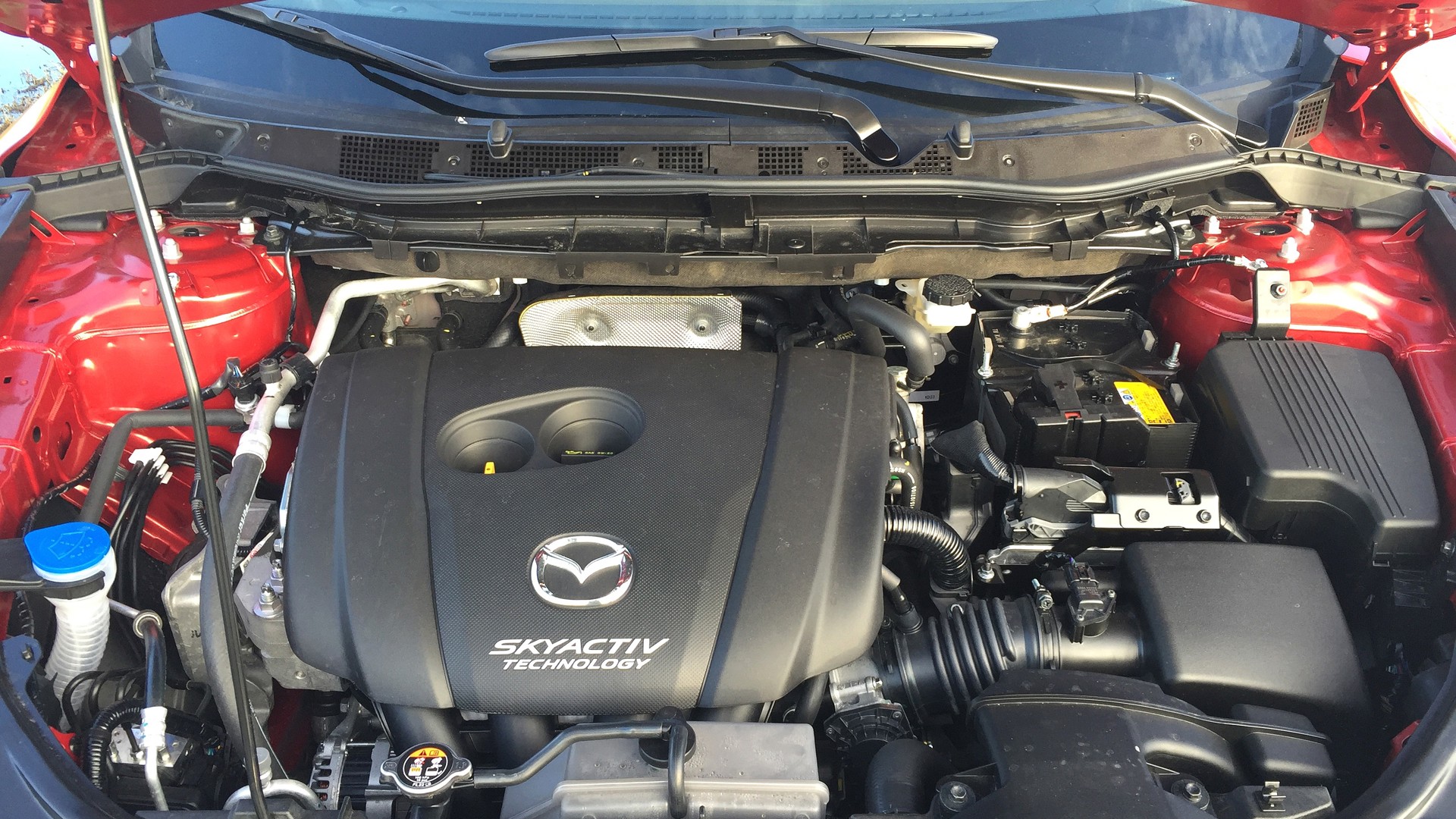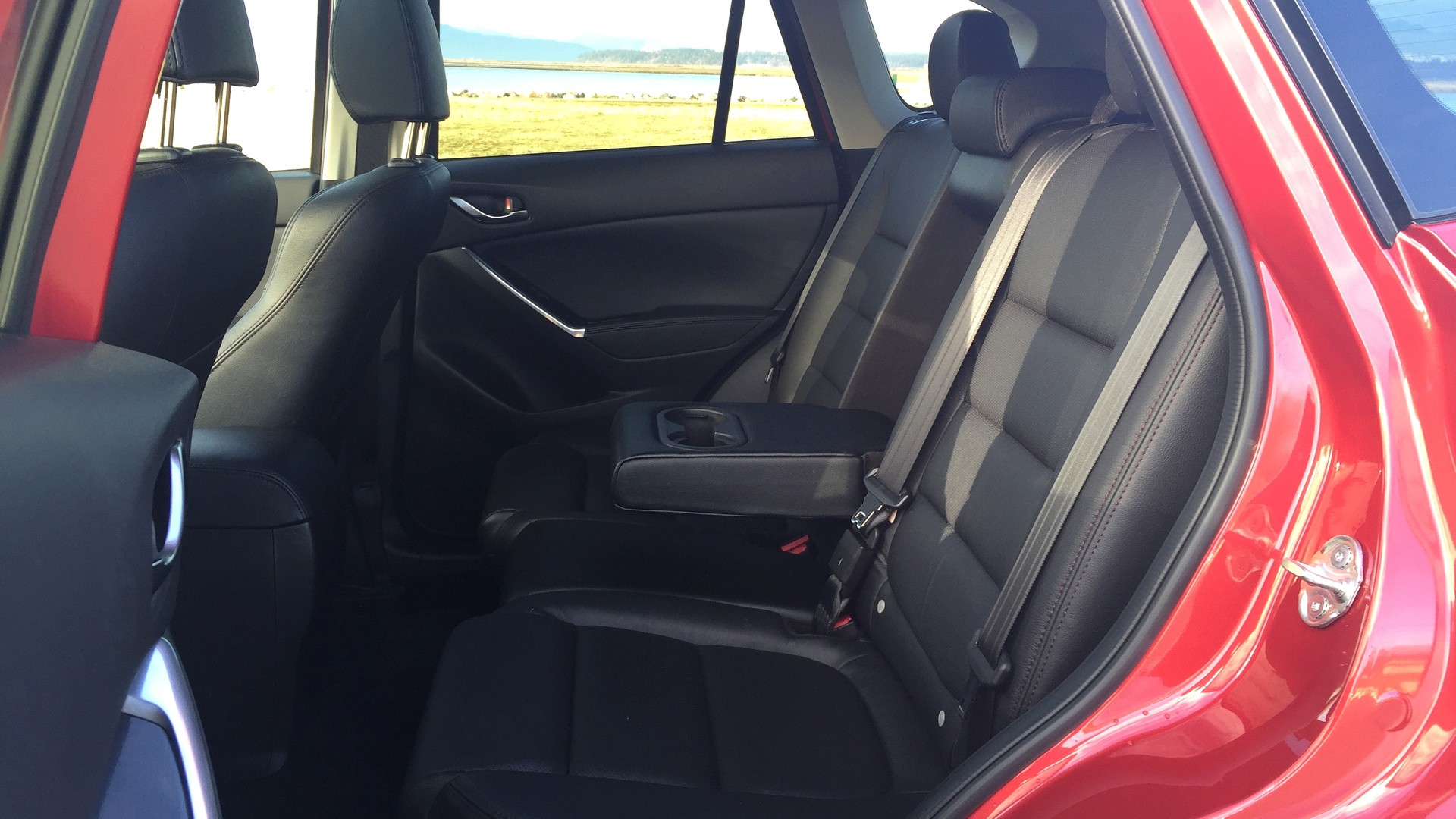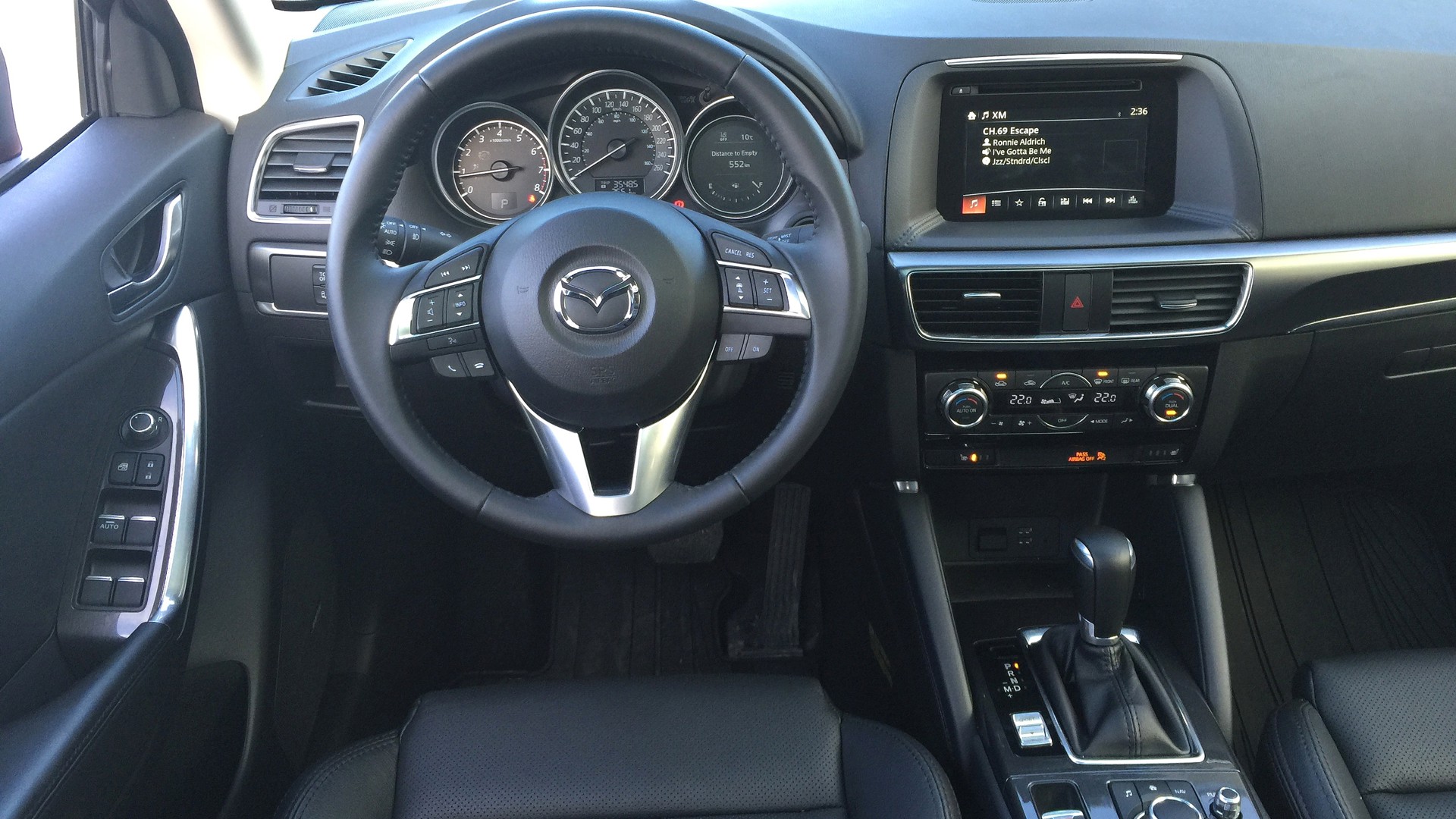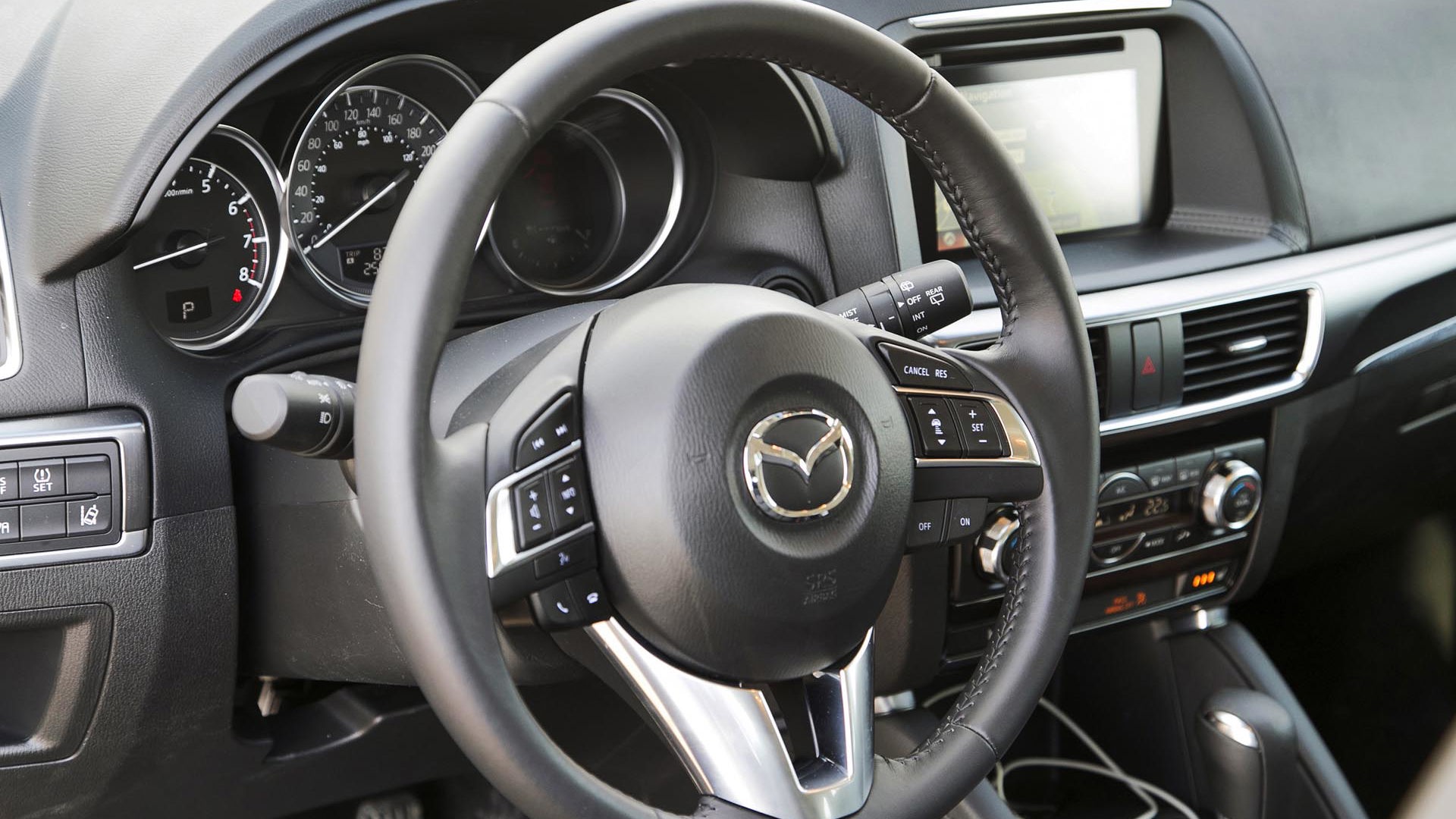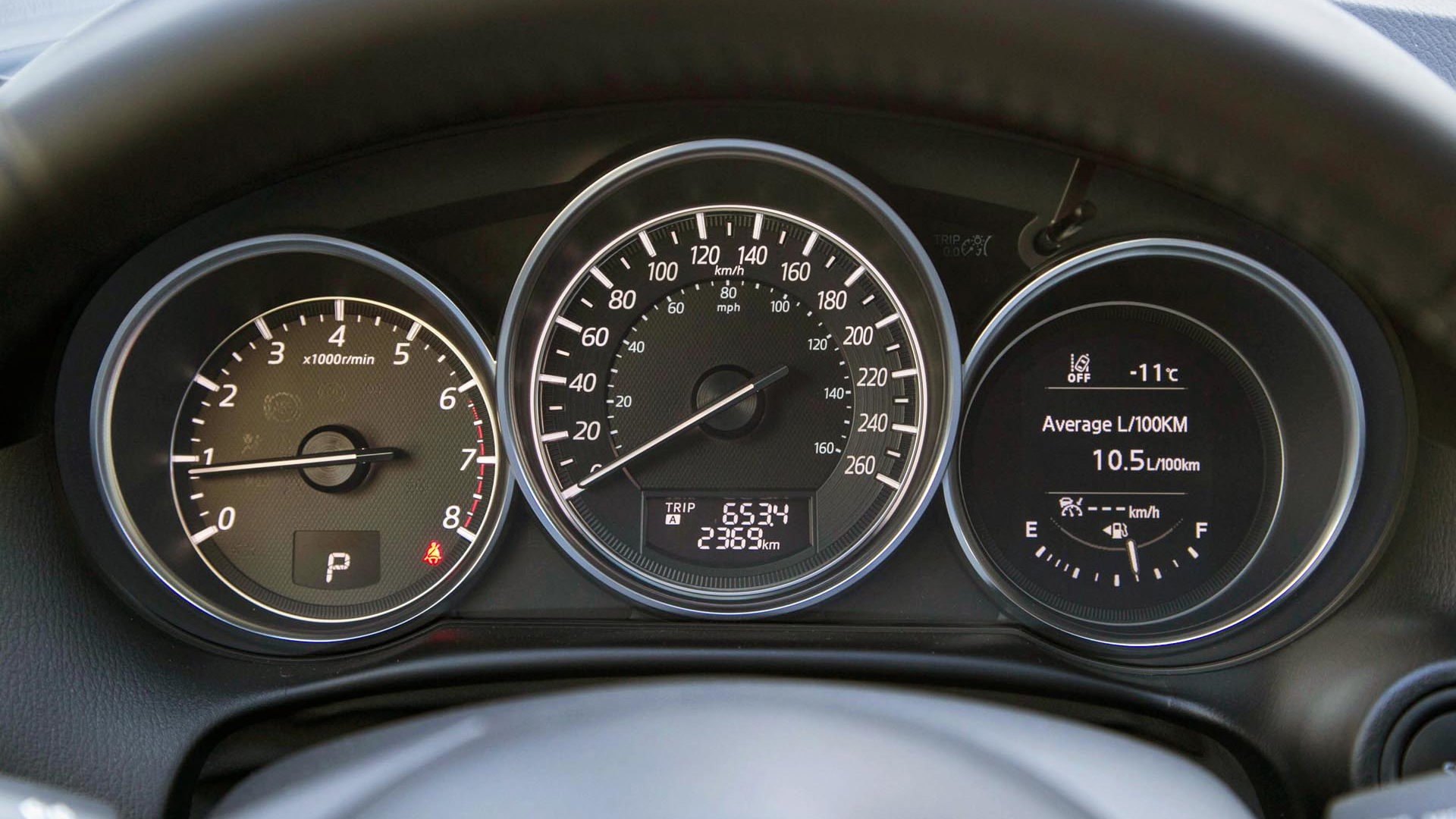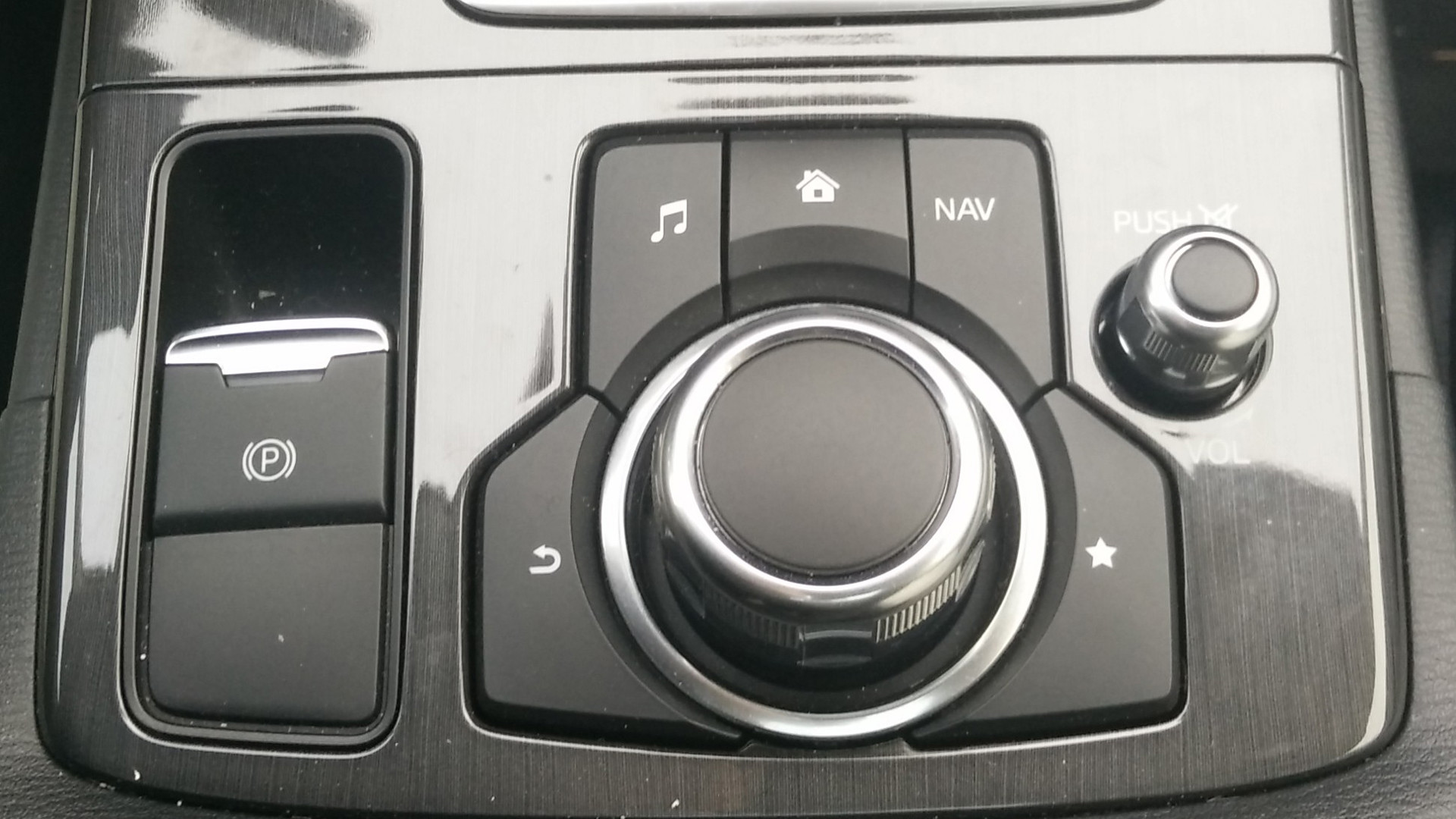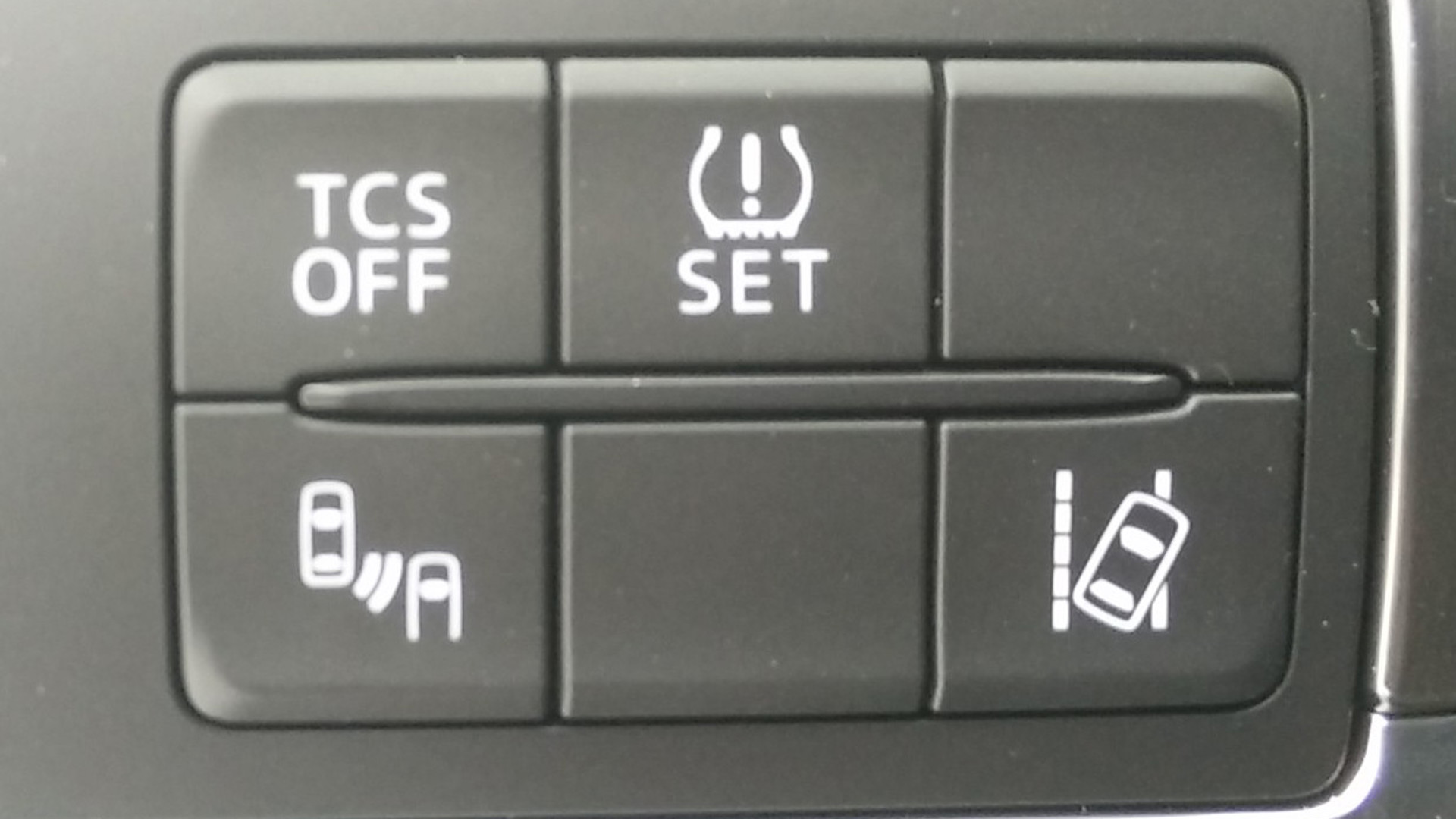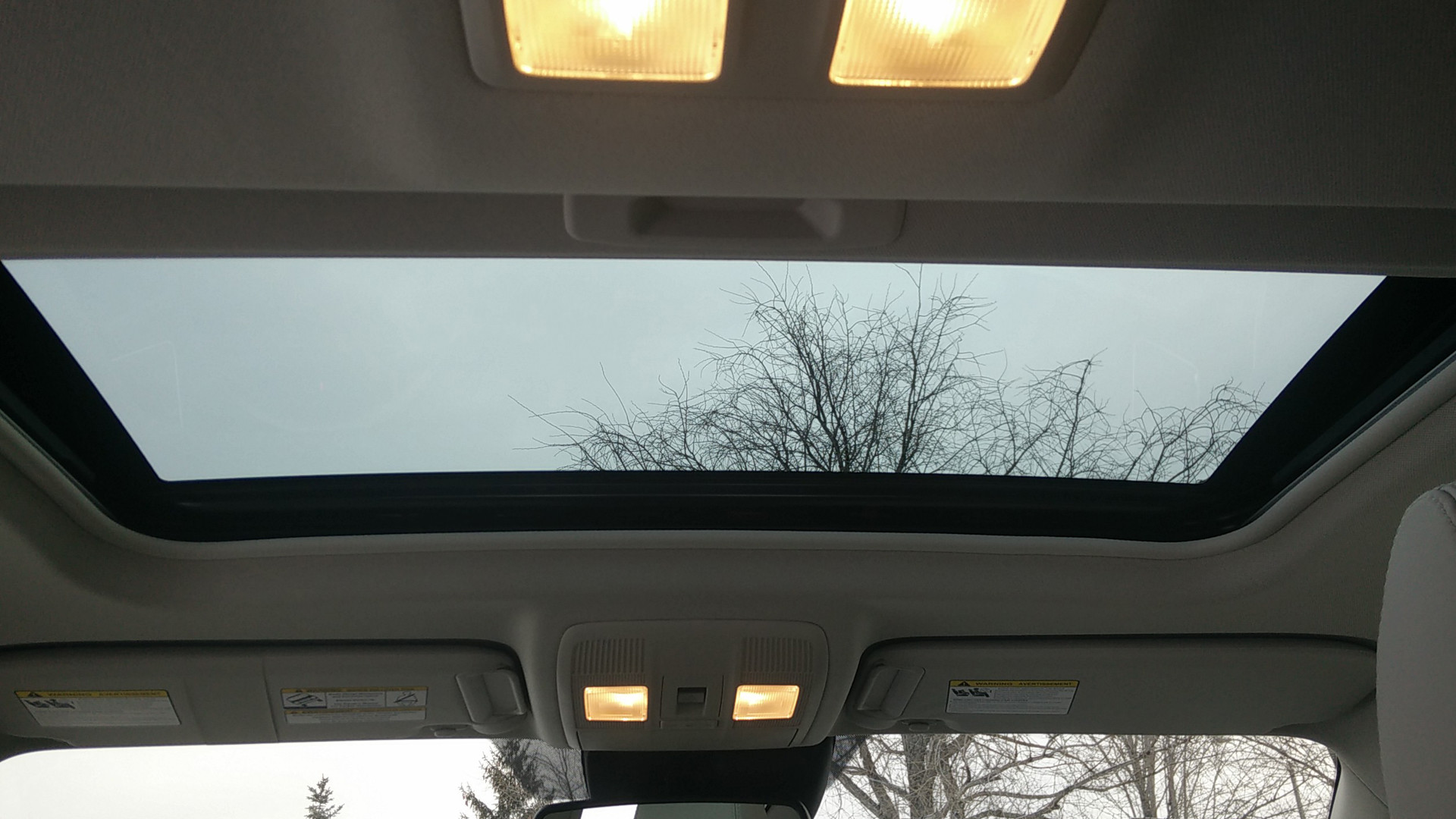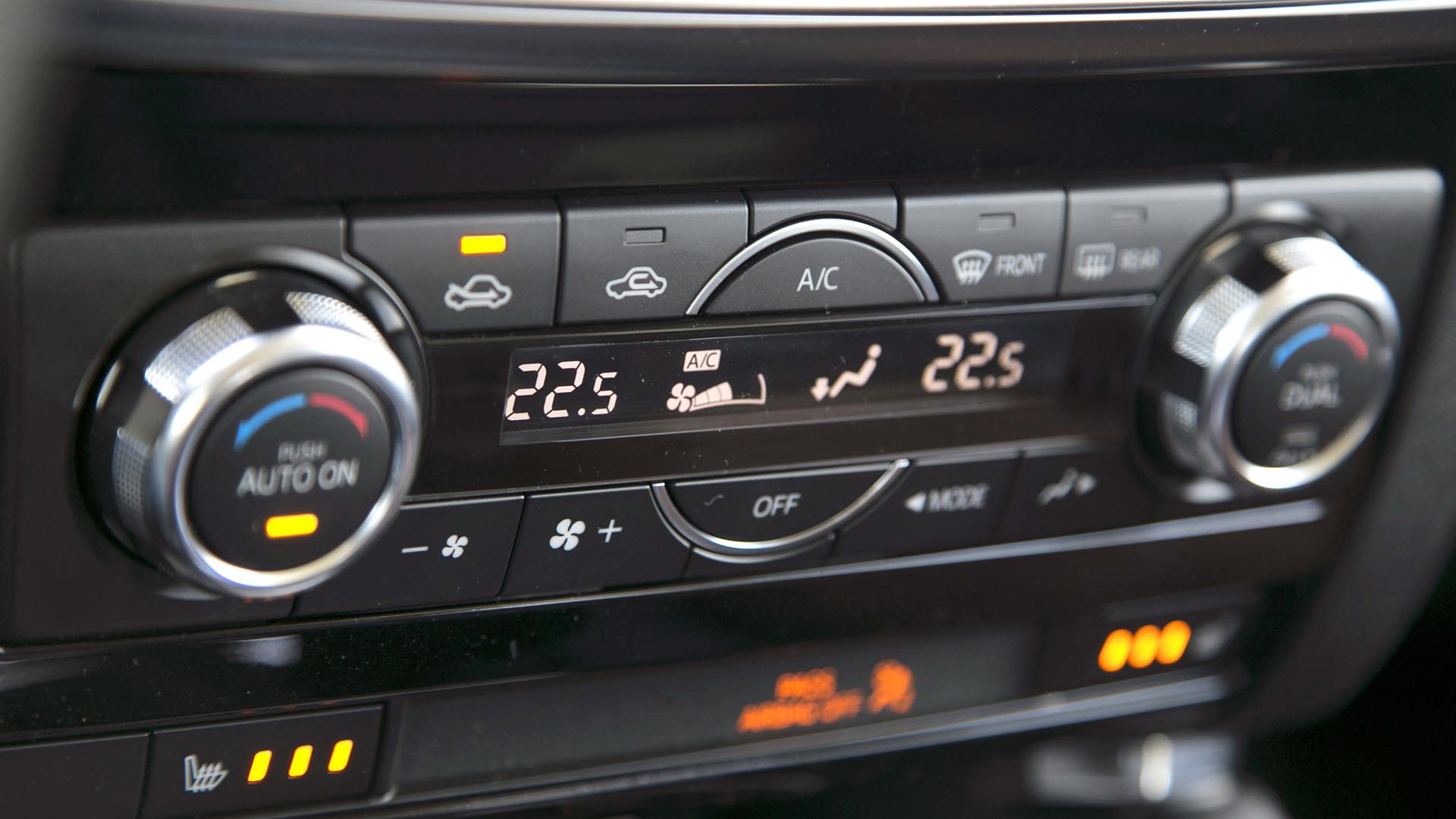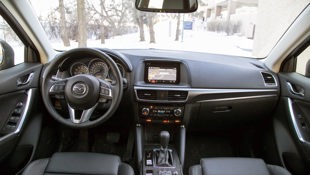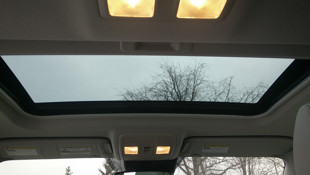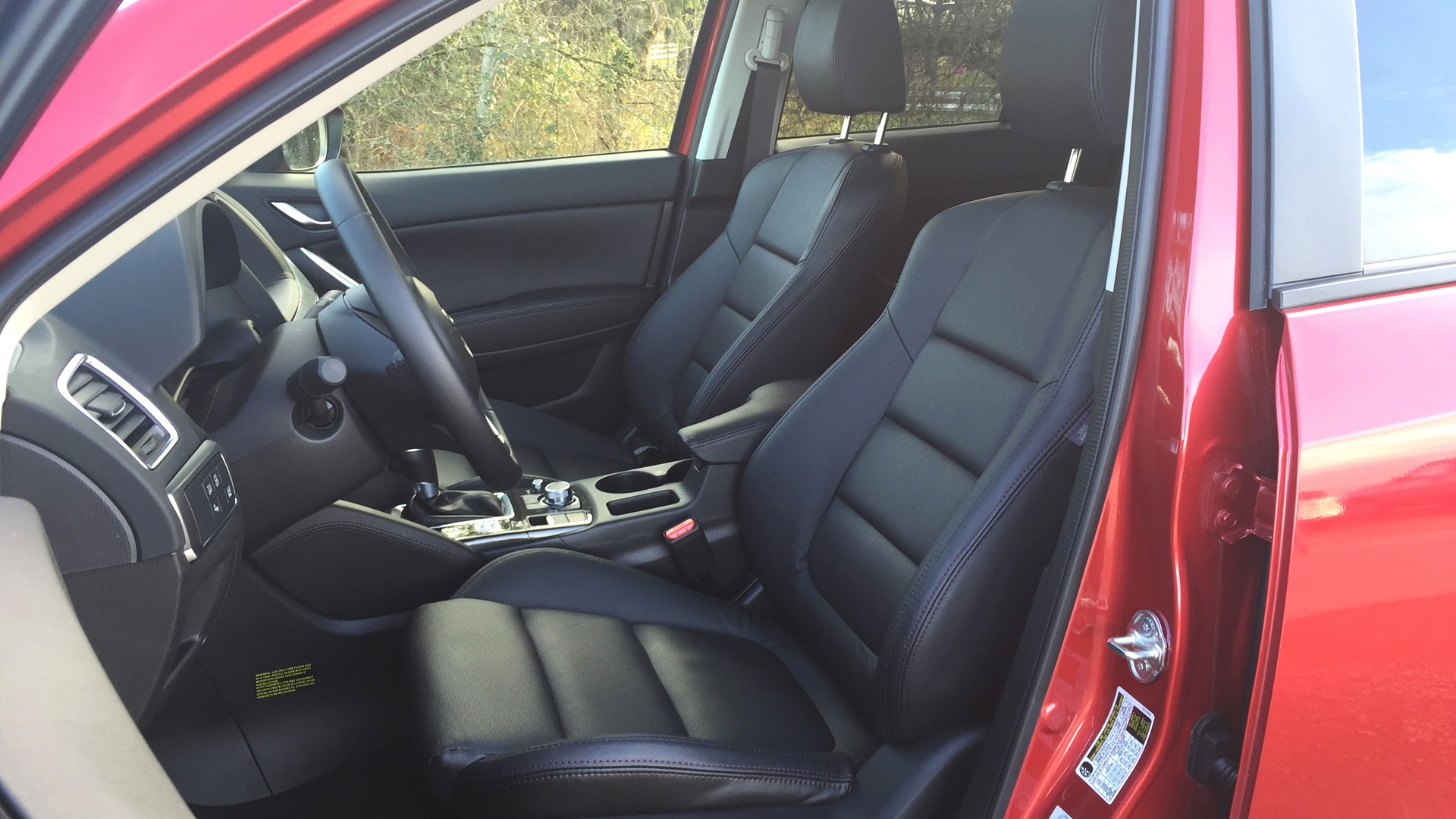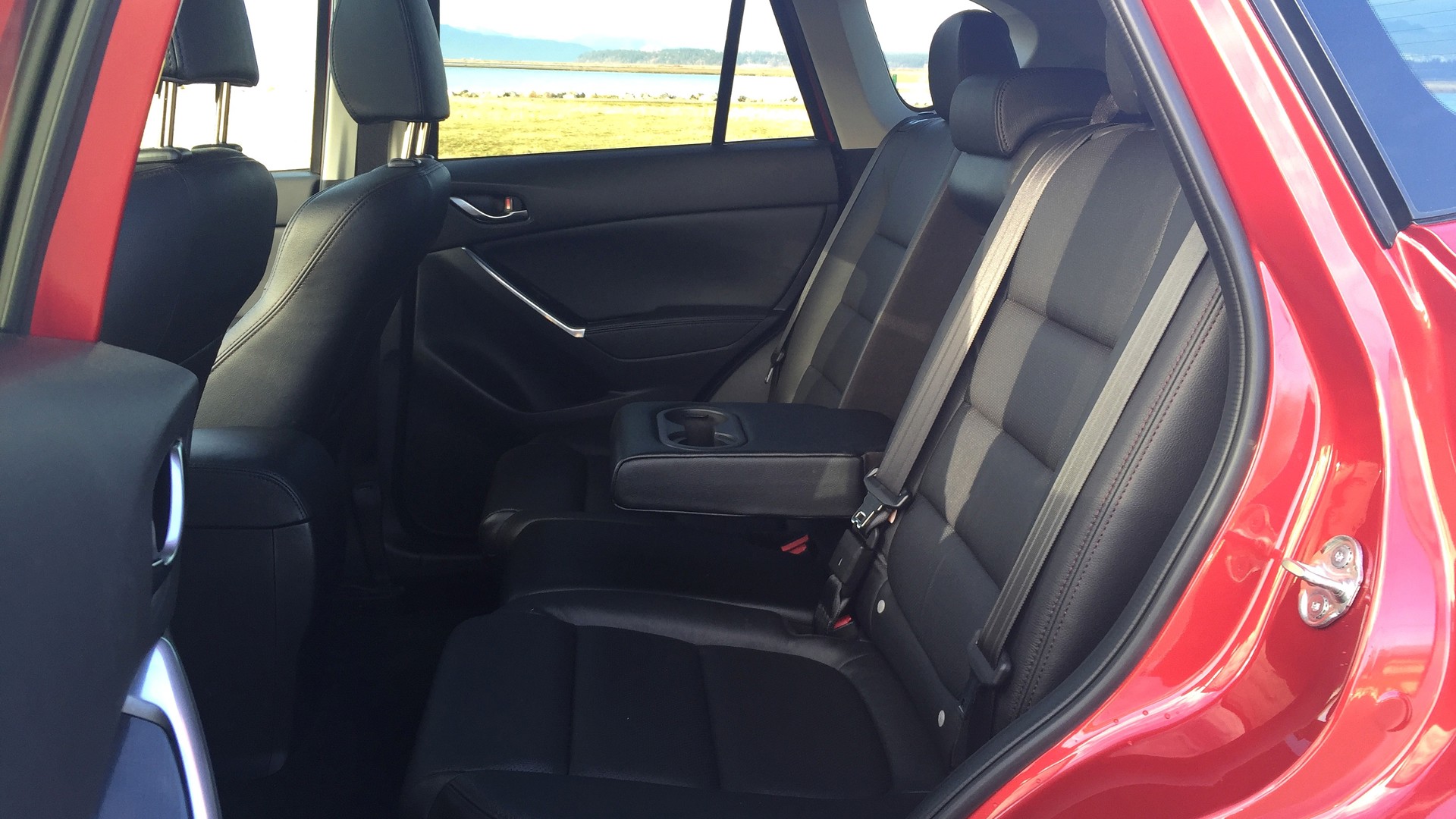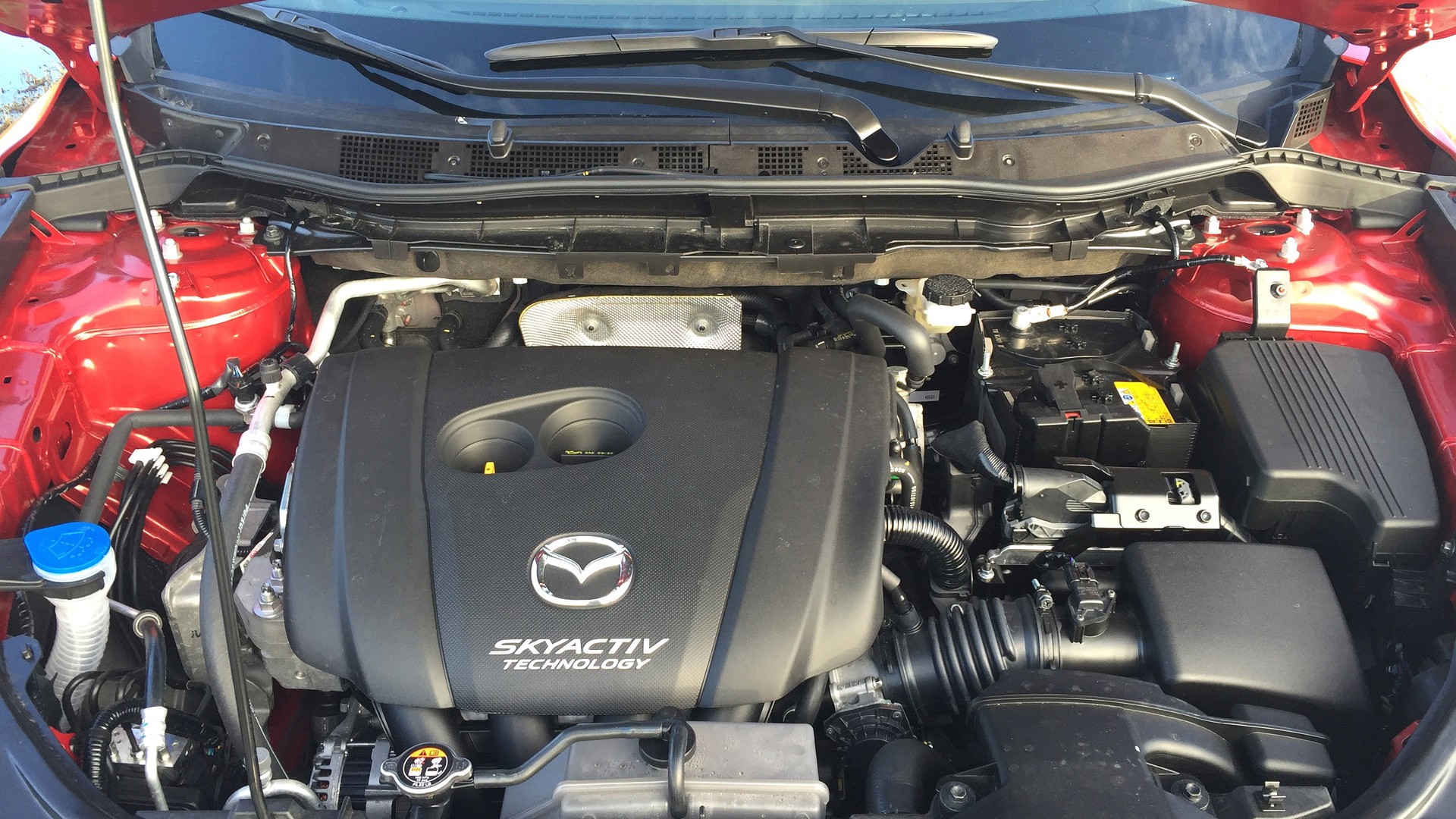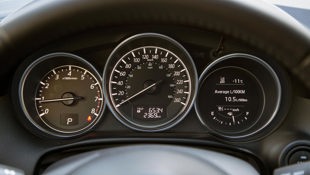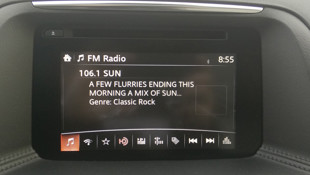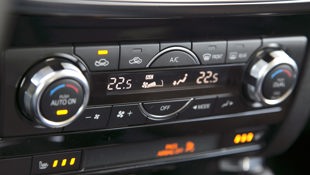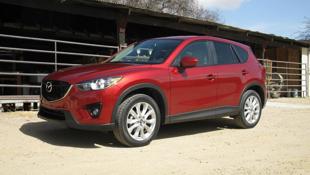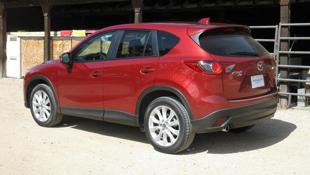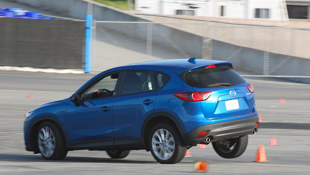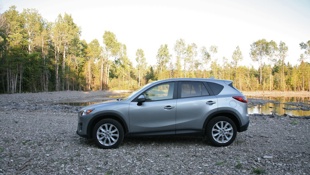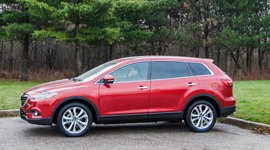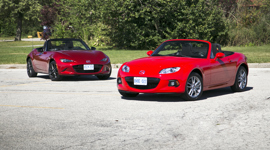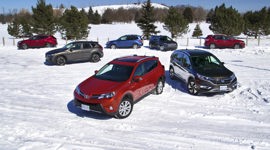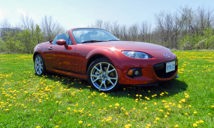Vehicle Type
Style, quality, feature content, and fuel efficiency.
Crossover SUV
History/Description
Time flies! The Mazda CX-5 has been on the Canadian crossover scene for some six years now. Introduced in the winter of 2012 to help refresh Mazda’s crossover lineup, the CX-5 was intended to give competitors from Toyota, Honda, Ford, Nissan, and others a run for their money – thanks in no small part to the use of advanced styling, advanced feature content, and the full spectrum of Mazda’s emerging SkyActiv technology.
Look for two seating rows, upscale interior and exterior styling, available all-wheel drive (AWD), and advanced safety systems.
Upmarket feature content included a Bose stereo system, Bluetooth, a back-up camera, a moonroof, intelligent key, adaptive (steerable) bi-xenon headlights, and navigation.
Engines
At launch, the CX-5 packed the 2.0-litre SkyActiv four-cylinder engine, good for 155 clean-running, high-efficiency horsepower. Notably, this engine ran the highest compression ratio of any mass-produced engine, featured direct injection and variable valve timing, and exhaled through a supercomputer-designed exhaust manifold. The engineers left virtually nothing off the table in creating a powerplant to extract the maximum amount of energy from every molecule of fuel it burned.
From model year 2014, a larger, higher-output 2.5-litre SkyActiv four-cylinder engine became available on higher-grade models, bumping output to 184 horsepower.
Transmission choices included a six-speed unit in the driver’s choice of automatic or manual, though the manual was only available on front-drive units.
Nomenclature saw the GX badge applied to base-model units, GS representing the value-oriented mid-grade units, and the GT representing full-jam, top-line models.
What Owners Like
Mazda CX-5 owners tend to rate their machines highly on all attributes relating to style, quality, feature content, and fuel efficiency. The upscale look and feel to much of the cabin is a common praise point, as is the real-world mileage. Spirited handling and steering and generally good ride quality help round out the package, and the AWD system is noted for invisibly enhancing performance and grip in slippery conditions.
What Owners Dislike
The CX-5’s most common gripes include somewhat sluggish overall performance with the 2.0L engine, and rougher-than-expected ride quality on some surfaces.
Here are some Mazda CX-5 owner reviews.
Pro Tip 1
Which CX-5 is for you? Based on owner feedback and past test-drives by your correspondent, shoppers are advised to drive multiple variants of a used CX-5 to determine which specific model and grade best meets their needs.
Two factors to consider, here.
First, note that higher-grade models will run larger wheels with thinner tires, which can cause ride quality to degrade on rougher surfaces. Visit the roughest road you can find on your test drive to confirm that the CX-5 will be comfortable enough for you. If it’s not, be sure to try a model with a smaller-diameter wheel, and a thicker tire, which can improve ride quality.
Second, determine which engine best meets your needs. Test drivers should consider a model with the up-level 2.5L engine if they find performance from the smaller 2.0L engine to be insufficient.
Pro Tip 2
From model-year 2015, Mazda removed the mileage limit on virtually all warranty coverage from their models. As such, warranty coverage ends after the designated time period, regardless of mileage. If this is of value to you, shop a 2015 or newer model – noting that earlier models are not retroactively covered by the unlimited mileage warranty.
Here’s Your Test Drive To-Do List
Check the Battery and Charging System
Work with a technician to confirm that the used CX-5’s battery and charging system are healthy and in order, for two key reasons. First, there’s some discussion about a shorter-than-expected lifespan from factory-installed batteries, and second, while weak or dying batteries may be able to start the vehicle, they can cause frustrating problems with numerous on-board electronics, which get fussy-pants when they don’t have enough voltage to do their job. Confirming you’ve got a healthy battery and charging system is a good step to avoid future headaches.
Transmission Check
Some owners have reported issues with the automatic transmissions in their CX-5, with varying degrees of severity. Here’s some reading. And some more. On your test drive, be on the lookout for signs of hard shifting, slamming, lurching, unwanted noises, or a sensation that the transmission is having trouble selecting the right gear form the job.
A healthy CX-5 transmission should operate virtually invisibly, with minimal sensations detectable by the driver during shifting. If the transmission feels strange, it may need to be replaced, or may need a software programming update. Though the vast majority of CX-5s did not have transmission problems, shoppers are advised to report any issues to their dealer service department for documentation as soon as possible, to help speed possible future warranty claims.
Central Command Check-Up
Spend a few moments giving the CX-5’s central command touchscreen and other provisions a little workout. Start by confirming that you’re able to access the navigation map (if equipped), and that the vehicle is accurately located on said map as you drive around. Confirm Bluetooth pairing and functionality. Flick through all menus and functions several times, noting any crashing or lagging.
Be sure to try all buttons and dial positions on the central command controller, pressing down on the central console controller too. If someone’s borked the central controller with an accidental Slurpee spill, now’s the time to find out. Note that software updates may be available to help correct issues with this system, so if you detect any, talk to your local dealer.
Unwanted Vibrations
Note that some owners have reported a strange vibration that may present itself consistently at a certain range of (typically higher) speeds, possibly accompanied by a steering pull to one side or the other. Though this issue isn’t common enough to warrant much concern, shoppers are advised to be on the lookout, especially at highway speeds. Causes may include out-of-balance wheels or faulty tires, though other more serious causes are also possible. In any case, have a dealer technician investigate if you notice any unwelcome sensations while driving.
Oil Leak
Some owners have reported minor oil leaks, possibly caused by faulty oil pan, timing cover or valve cover gaskets. Have a technician inspect the CX-5 you’re considering for these leaks and make arrangements to have them addressed as soon as possible. In most cases, leaks will be covered by warranty.
Safety Systems Check
If the CX-5 you’re considering is equipped with advanced camera or radar-based safety equipment, be sure to check for proper operation before buying. When one or more systems is non-functional, warning lights will appear in the instrument cluster. If you see these, be sure to have the cause of the error investigated before you buy. Dirty or blocked sensors, or condensation or dirt blocking the forward camera’s view, are possible causes.
Other Useful Checks
Fill for Life Fluids
Some of the CX-5’s fluids are classified as “filled for life”, meaning that they never require a fluid change. A large community of owners choose to ignore this recommendation and change these fluids every few years, for added confidence and peace of mind. Several technicians and mechanics in our network agree that this is a good idea. You may choose to change these fluids, or not to, but remember that a non-required fluid change is relatively inexpensive in exchange for the peace of mind that comes with knowing your ride is running fresh fluids in all components. Here’s some more reading to consider. Check the service schedule in the owner’s manual to determine which fluids need changing, and when. Note that most Canadians are best to follow the “severe” service schedule for maintenance.
Direct-Injection Valve Gunk Deposits
The Mazda CX-5 uses a direct-injected engine, which is noted in numerous other applications for a potential problem with excessive valve-gunk buildup over time, which can cause problems. Not all direct-injected engines wind up with excessive valve-gunk problems, and information is mixed at best as to how this plays out with Mazda’s SkyActiv engines.
Still, shoppers can take a few steps to defend themselves against valve gunk issues. First, have the ECU scanned for trouble codes, noting that a misfire code can be the result of a problem with excessive valve gunk deposits. Next, be sure to change the engine oil and spark plugs well before their recommended service intervals, and never, ever stretch an oil change or spark plug change. Earlier is best. Finally, use quality gasoline at the factory-recommended octane, at all times. Top Tier fuels, from major fuel retailers, are best for your engine and should be used at all times. Note that pour-in-tank cleaning additives will have no effect on valve gunk deposit buildup.
Recalls
Just three recalls were made for the CX-5. Ensure any applicable work has been carried out.
The Verdict
Most of CX-5’s major reported issues are far from being reported with enough frequency to cause any major concern; other more commonly reported issues, thus far, seem minor and easily detectable in nature. With a quick check-over and thumbs-up from a dealer technician on a pre-purchase inspection (PPI) after observing the information above, the CX-5 should make for a confident buy.
Crash Test Ratings
IIHS: Top Safety Pick + (2016)
NHTSA: 5/5 Stars (2015+)
